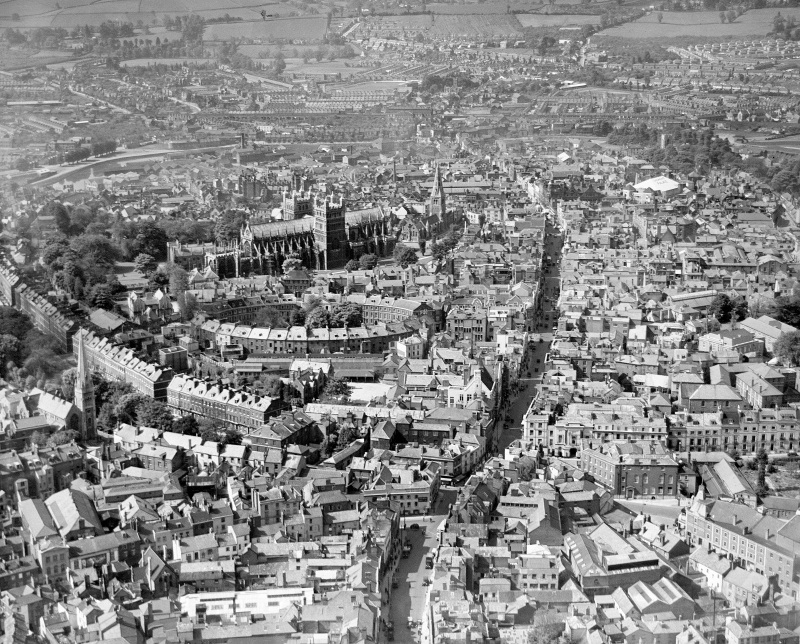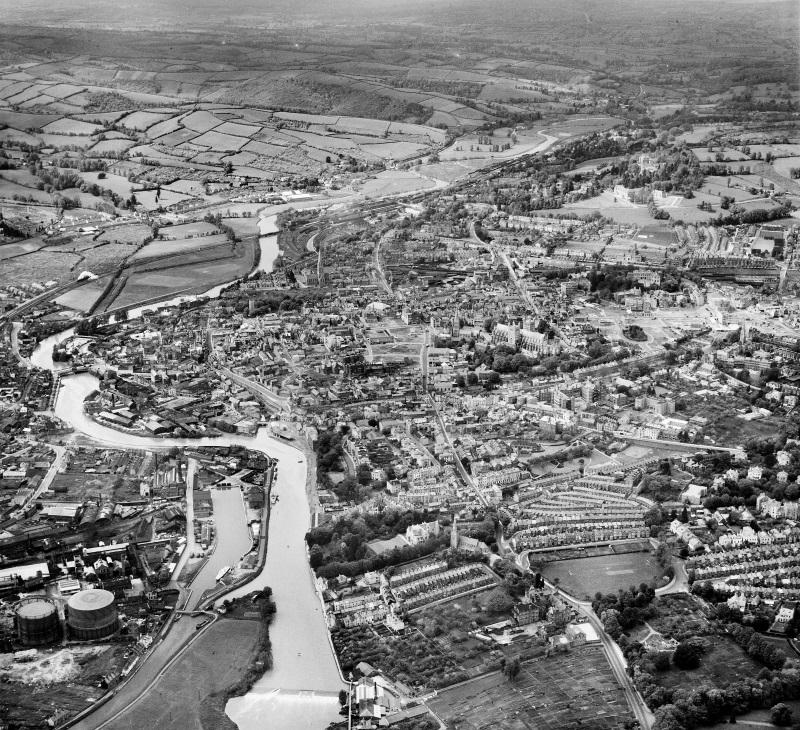At the beginning of World War II Exeter was well provided with service industries such as shops, banks and entertainment venues, but it was not a major industrial centre, and so was not really targeted in early bombing raids. Instead it was seen as a safe place in which people evacuated to from England's more strategically important cities.

It wasn't until the Baedecker Raids in 1942 that Exeter was hit badly. These raids were named after a German language tourist guide to Britain, which Hitler used to choose five of the most beautiful British cities to target, in retaliation for the destruction of the German medieval town of Lubeck.
Exeter was the first city to be hit, followed by Bath, Canterbury, Norwich and York, with the Exeter Blitz beginning in earnest on the night of 4th May 1942. Over 20 Luftwaffe bombers, using the River Exe for navigation, flew over Exeter and discharged their deadly cargo.
Over 10,000 incendiary bombs and over 170 high explosive bombs were dropped on Exeter, causing the destruction of nearly half of the densely built city centre inside the ancient Roman walls.
Historic buildings which were lost in the Exeter Blitz included the iconic Bedford Circus (which can be seen in the image above, just below Exeter Cathedral), Deller's Cafe, large parts of the ancient High Street, areas of Magdalen Road, Globe Hotel, St Lawrence Church and St Catherine's Almshouses, which has been left in ruins as a memorial. Miraculously, Exeter Cathedral survived, despite sustaining a direct hit.

The raid killed 156 men, women and children and injured over 550, many of whom were left affected physically and mentally for life.
Thankfully by the time of the Blitz, Exeter had hundreds of Anderson air raid shelters, which people erected themselves. An example of one of these can be found in the Royal Albert Memorial Museum. There were also several thousand Morrison shelters in people's homes.
Up to 300 people could also shelter in Exeter's Underground Passages. However these were dark and cramped with only rudimentary lighting and no toilet facilities, and the sound of the bombs hitting the High Street above could clearly be heard, which would have been terrifying!
The rebuilding of Exeter took over 20 years to complete.
Visit the RAMM's website for some fascinating online learning materials about the Second World War and the Exeter Blitz. 2020 also marks the 75th anniversary of VE Day. the end of the Second World War, where the guns fell silent on 8th May 1945. See how Exeter is getting involved with VE Day virtual celebrations.
Related
Comments
Comments are disabled for this post.



 to add an item to your Itinerary basket.
to add an item to your Itinerary basket.






Doug
Regards